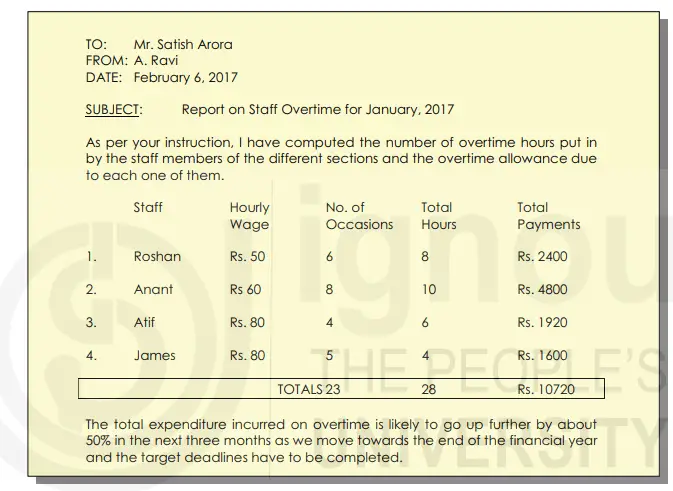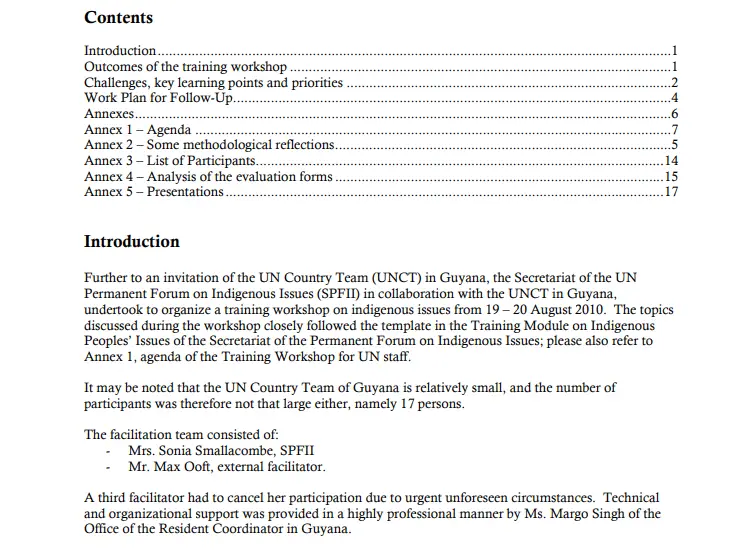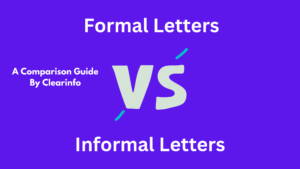What is a Short Report?
A short report is a concise and focused document that presents information, findings, or recommendations about a specific topic or issue. Short reports are usually limited in length and scope, aiming to deliver essential details clearly and straightforwardly. They are commonly used in business, academic, and professional settings to communicate key insights or updates efficiently.
In the business environment, short reports are used to update stakeholders on project progress, summarize market research, or present financial data. In academic settings, short reports are used to summarize research findings, provide a quick overview of a study or give updates on ongoing research.
Overall the primary goal of a short report writing is to present information in a manner that is both easy to understand for its intended audience.
Characteristics of a Short Report
Their key characteristics include:
1/ Brevity: Short reports are relatively brief, typically ranging from one to a few pages. They avoid unnecessary details and get straight to the point.
2/ Purposeful: Short reports have a clear purpose, which could be to inform, summarize, analyze, or propose actions. The content should align with this purpose and avoid unrelated information.
3/ Specific Scope: These reports focus on a single topic or a specific aspect of a larger subject. They do not cover multiple unrelated subjects in a single document.
4/ Structure: A typical short report structure includes an introduction, main body, and conclusion. The introduction outlines the purpose and scope, the main body presents the information or analysis, and the conclusion summarizes the key findings or recommendations.
5/ Formality: Depending on the context, short reports may have a more formal or informal tone. In business settings, they are often more formal, while in academic environments, they might lean toward a formal style.
6/ No or Minimal Appendices: Short reports do not usually contain lengthy appendices, as their purpose is to provide a concise overview.
7/ Audience-oriented: The content of a short report is tailored to the needs of its intended audience. It presents information in a way that is understandable and relevant to the readers.
8/ Visual elements: Depending on the content, short reports may incorporate charts, graphs, or other visual aids to enhance understanding and clarity.
Related Reading: Characteristics And Features of a Good Business Report
Examples of Short Reports Used By Businesses


Format of a Short Report
The short report writing format may vary depending on the organization, purpose, and specific guidelines, but generally, it follows a structured layout. Here’s a detailed outline of the typical format of a short report:
1/ Title Page: The title page is the first page of the report and contains essential information about the report, such as the title, the name of the author or authors, and any other relevant identification details. The title should be clear and concise, reflecting the main focus of the report.
2/ Table of Contents (optional): For longer short reports, you may include a table of contents to help readers navigate through the sections and subsections. However, for very brief reports, a table of contents may not be necessary.
3/ Executive Summary (or Abstract): This section provides a concise summary of the entire report, highlighting its key points, findings, and recommendations. The executive summary allows readers to grasp the main content without reading the entire report.
4/ Introduction: The introduction sets the context for the report, explains its purpose, and outlines what readers can expect to find. It provides a brief background of the subject and explains the significance of the report.
5/ Body of the Report: The body of the report is where you present the main content and findings. It is organized into sections with clear headings and subheadings. Common sections may include:
- Methodology (if applicable): If the report involves research or data collection, this section describes the methods used to gather information. It includes details about the data sources, research design, sampling techniques, and data analysis procedures.
- Findings or Results: This section presents the main information, data, or findings that have been discovered or collected during the research or investigation. It can include text, numerical data, charts, graphs, or any other relevant information to support the report’s objectives.
- Analysis and Discussion: In this section, the report’s author interprets and analyzes the findings presented earlier. It provides insights, explanations, and discussions on the implications of the data or information gathered. The analysis helps readers understand the significance and relevance of the results.
- Conclusions: The conclusions section provides a concise summary of the main points from the report. It restates the main findings and may offer recommendations based on the analysis. Conclusions should be clear and directly linked to the objectives outlined in the introduction.
5/ References (or Bibliography): If external sources were used, proper citation and referencing should be provided in a separate section at the end of the report. This ensures that readers can verify the sources and explore further if needed.
It is important to note that the length and depth of each section can vary based on the specific requirements and the complexity of the report. For instance, a short business report may include a specific section for recommendations and appendices for more detailed information.
However, the overall objective of a short report is to convey the necessary information in a clear, concise, and organized manner, tailored to the audience’s needs.
The Six-Step Formula of How To Write A Short Report
Planning
Researching
Drafting
Editing
Concluding
Recommending
Types of Short Reports
Short reports can be categorized into different types based on their purpose, content, and the information they convey. Here are some common types of short reports:
1/ Progress Report: A progress report provides an update on an ongoing project or task status. It outlines the achievements made, the challenges faced, and the remaining work to be done. Progress reports are often used in business and academic settings to inform stakeholders about the project’s development.
2/ Meeting Minutes: Meeting minutes are a type of short report that records the discussions, decisions, and action items from a business meeting. They act as an authoritative record of the proceedings during the meeting. and are essential for tracking progress and accountability.
3/ Trip Report: A trip report outlines the details of a business trip or visit to a specific location. It includes information about the purpose of the trip, the places visited, meetings attended, and any notable observations or insights gathered during the trip.
4/ Sales Report: A sales report presents data related to sales performance over a specific period. It may include information on revenue generated, sales volume, customer demographics, and analysis of sales trends. Sales reports help businesses monitor their sales activities and make informed decisions.
5/ Feasibility Report: A feasibility report assesses the viability and practicality of a proposed project or initiative. It examines various factors such as technical, financial, legal, and operational aspects to determine if the project is feasible and worth pursuing.
These are just a few examples of the types of short reports that are commonly used in various fields. Each type of report serves a specific purpose, and its content and format will vary accordingly. Regardless of the type, the key to writing a short report is to present information clearly and in a format suitable for the intended audience.
Related Reading: Types of Business Reports in business communication
What is a long report?
A long report is a formal and comprehensive document that provides a detailed analysis, in-depth information, and extensive findings on a particular subject or topic.
Unlike a short report, which is concise and focuses on essential information, a long report delves deeper into the subject matter, offering a more thorough examination of the issues at hand. Long reports are commonly used in academic, business, government, and research settings when extensive analysis and detailed information are required.
Types of a long report
1/ Business Report: Business reports offer in-depth insights and comprehensive analysis covering diverse aspects of a company’s operations. They can cover market research, financial analysis, performance evaluations, feasibility studies, and more. Business reports help stakeholders make informed decisions and develop strategies for improvement. The structured presentation in a business report format ensures that information is organized logically, allowing for easier comprehension and data-driven decision-making.
2/ Financial Report: Financial reports present comprehensive financial information about a company or organization. Within these reports, you will find balance sheets, income statements, positive and negative cash flow statements, and other crucial financial data. All of this wealth of information offers valuable insights into the financial well-being and performance of the entity.
3/ Annual Report: An annual report offers a comprehensive overview of a company’s activities, achievements, financial performance, and future plans during the previous year. It is typically prepared for shareholders and stakeholders to provide transparency about the company’s operations.
4/ Technical Report: Technical reports are thorough documents that emphasize technical information concerning a particular subject or project. They are commonly used in engineering, technology, and scientific fields to communicate complex data, designs, experiments, and analyses.
Differences Between a Long and Short Report
A long report is generally referred to as a formal report. It contains a wider range of information which requires a lot of research and documentation of in-depth details. On the other hand, a short report is generally considered an informal kind of report. It is usually written in the form of a letter or memo. The information presented is concise and to the point.
Six key differences between short and long reports:
Point of Difference | Short Report | Long Report |
Length | Short reports are typically brief and concise, usually ranging from a few pages to a maximum of around 10-15 pages. | Long reports are extensive, often exceeding 15 pages and can span up to hundreds of pages, depending on the complexity and subject matter. |
Scope and Depth | Short reports provide a general overview and focus on the most critical information, without delving into extensive analysis or in-depth details. | Long reports explore the subject matter comprehensively, providing detailed analysis, extensive research, and a more thorough examination of the topic. |
Purpose | Short reports are used to communicate essential information quickly and efficiently. They may update stakeholders, provide a summary of findings, or make brief recommendations. | Long reports serve to present comprehensive research findings, detailed analyses, and complex information, making them suitable for academic, technical, and research purposes. |
Sections and Structure | Short reports typically have a simple structure with limited sections, such as introduction, findings, and conclusion. | Long reports follow a more complex structure with multiple sections, including executive summary, literature review, methodology, analysis, conclusions, recommendations, and more. |
Use of Visuals | Short reports may use a few visuals, such as charts or graphs, to enhance understanding. | Long reports often incorporate numerous visuals, including tables, charts, graphs, images, and appendices, to present complex data and support extensive analysis. |
Target Audience | Short reports are usually aimed at a broader audience with limited time, seeking concise and essential information. | Long reports are intended for a more specialized audience, such as researchers, academics, policymakers, or industry experts, who require in-depth insights and comprehensive details. |
It is important to note that the specific characteristics of short and long reports may vary based on the context and requirements of individual reports.
Frequently Asked Questions
Q1) What is short report writing?
Ans: Short report writing refers to the process of creating concise, formal documents that present specific information or findings on a particular topic. These reports are typically brief and to the point, focusing on essential details without excessive elaboration.
Q2) How long should a report be?
Ans: The length of a report can vary significantly depending on its purpose, the subject matter, and the specific requirements of the organization or institution requesting it. There is no fixed rule for the exact length of a report, but it should be long enough to effectively convey the necessary information while also being concise and avoiding unnecessary details.
Q3) A shorter report is considered to be?
Ans: A shorter report is considered to be a concise and brief document that provides a summary of specific information or findings on a particular topic. It focuses on presenting the essential details without unnecessary elaboration or extensive analysis.



